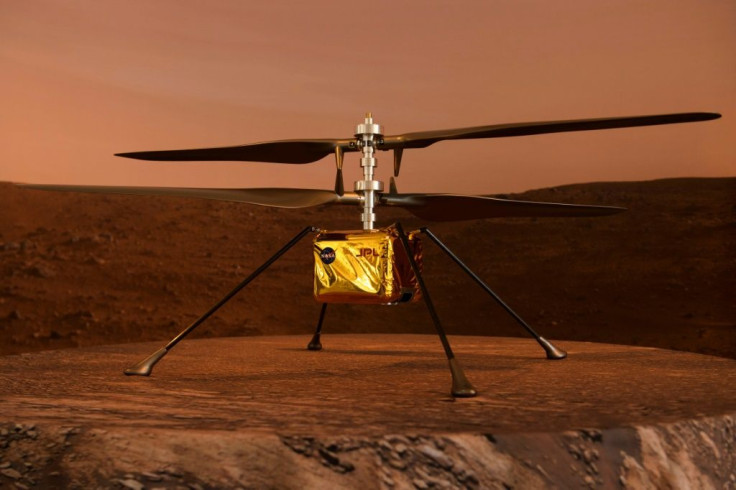Aliens On Mars? Here's How NASA Mars Rover Will Search For Life
KEY POINTS
- Perseverance rover is set to land on Mars this Thursday and begin its search for signs of ancient life
- Scientists hope to find signs of microbial life in Jezero Crater, which is believed to have had a lake billions of years ago
- The rover is equipped with scientific instruments to help it investigate the area and find samples
As NASA prepares for the Perseverance rover's landing on the surface of Mars, the hope that it will find signs of ancient life on the red planet is as strong as ever.
On Thursday, at approximately 3:55 p.m. EST, Perseverance will attempt to enter the Martian atmosphere. Set to land on the giant basin that is Jezero Crater, the rover is tasked with studying the geology and climate of the red planet and searching for telltale signs that microbial life once lived on Mars.
Jezero Crater is believed to have been the site of a large lake billions of years ago, and scientists are eager to find out if the area contains evidence that life once existed there.
"We expect the best places to look for biosignatures would be in Jezero’s lakebed or in shoreline sediments that could be encrusted with carbonate minerals, which are especially good at preserving certain kinds of fossilized life on Earth," Ken Williford, deputy project scientist for the Mars 2020 Perseverance rover mission, said in a statement on NASA's website.
Perseverance carries with it the great expectations of those back on Earth and is tasked to collect rock core samples in metal tubes — samples that will be returned back to Earth by future missions for further study. The Martian samples Perseverance gathers will offer a gateway not only to the planet's past but to the future of human space exploration as well.
"To quote Carl Sagan, if we see a hedgehog staring in the camera, we would know there’s current and certainly ancient life on Mars, but based on our past experiences, such an event is extremely unlikely," said Gentry Lee of NASA’s Jet Propulsion Laboratory. "Extraordinary claims require extraordinary evidence, and the discovery that life existed elsewhere in the universe would certainly be extraordinary."
To search for biosignatures, or evidence of past or present life, the Mars rover will be utilizing its suite of cameras, which can zoom in to inspect specific targets. Perseverance's SuperCam instrument also allows it to fire a laser at a promising target, which then generates a plasma cloud that can be analyzed to help determine its chemical composition.
The rover's PIXL (Planetary Instrument for X-ray Lithochemistry) and SHERLOC (Scanning Habitable Environments with Raman & Luminescence for Organics & Chemicals) will also be able to provide high-resolution maps of elements, minerals and molecules on the Martian surface, allowing scientists back on Earth to determine which samples to collect.
As for what kind of samples they are hoping to collect, the scientists want to find features that can only be attributed to ancient microbial life such as stromatolites. These are rocky mounds formed by microbial life along ancient shorelines.
But even if the samples Perseverance collects may show that no life ever existed on Mars, scientists believe they will be able to provide information about the "reach of life in the cosmos" and how rocky planets like Earth formed and evolved.
As NASA scientists and engineers prepare for the Perseverance rover's approaching landing, the rest of the world can only tune in and hope for its success.

© Copyright IBTimes 2025. All rights reserved.





















